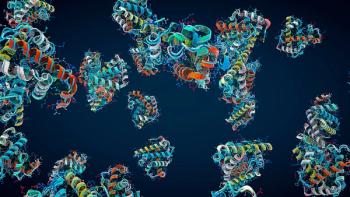
- BioPharm International-03-10-2006
- Volume 2006 Supplement
- Issue 2
Introduction
Anyone who has ever hoisted a glass of a local microbrew has experienced the results of the oldest form of biotechnology?fermentation, the process by which living cells obtain energy through the breakdown of glucose and other molecules. The basic technique of brewing has not changed much in the past 6,000 years, but it is still an excellent illustration of the principles that underlie some of today's most sophisticated biotech production.
Anyone who has ever hoisted a glass of a local microbrew has experienced the results of the oldest form of biotechnology—fermentation, the process by which living cells obtain energy through the breakdown of glucose and other molecules. The basic technique of brewing has not changed much in the past 6,000 years, but it is still an excellent illustration of the principles that underlie some of today's most sophisticated biotech production.
To make beer, you first create a broth or wort of water and malt (barley that has been allowed to sprout). Natural enzymes in the wort break down starches in the barley to sugars such as maltose and maltotriose. Next you add Saccharomyces cerevisiae — brewer's yeast — a single-celled organism that feeds on these sugars and breaks them down into alcohol, carbon dioxide, and an array of other byproducts, including some that contribute flavor.
The yeast multiply in the wort until they reach a concentration of millions of cells per milliliter. Yeasts work their magic of converting sugar to alcohol, and then, as the alcohol level in the brew reaches a point that inhibits further growth, they fall into dormancy and settle to the bottom of the brewing vessel. The beer, the product of a colony of microorganisms raised for the purpose, can be drawn off, aged, bottled, and drunk.
Simple fermentation — growing a colony of yeast or other single-celled organisms that convert nutrients into some useful substance — is used to manufacture many products, from commercial glycerin, acetone, butyl alcohol, and butyric acid to acidophilus milk and yogurt, and even sausages like pepperoni. But since the development of techniques to manipulate DNA, the traditional technology of fermentation has taken on a whole new life. Today, genetically engineered microorganisms, and even cells derived from plants and animals, are used to produce a remarkable range of products, including therapeutic proteins, antibodies, and vaccines.
The biopharmaceutical industry does not use these techniques and processes only for manufacturing protein drugs and diagnostics. Cell culture is also an important element in research and drug testing. Many scientific assays make use of bacteria or other cells in culture — or products made by them.
Many somatic cell gene therapies are produced by fermentation or cell culture. In this case, the genetic material itself is what's important. With smaller genes, the DNA can be chemically synthesized and amplified by polymerase chain reaction (PCR). But larger genes are better replicated in the cells of bacteria, yeasts, or animals.
The cells themselves can be the therapeutic agent. Human stem cell therapies are being researched and developed at several companies, and some other cell therapies are already on the market. Apligraf from Novartis Pharmaceuticals is human skin for grafting. Carticel from Genzyme Tissue Repair consists of autologous cultured chondrocyte cells used to repair cartilage defects. Cell culture techniques are vital to the manufacture and storage of these products.
Cells are even being considered for drug delivery. Companies like Modex Therapeutics in Switzerland are engineering human skin cells (for example) to produce recombinant proteins, then encapsulating the proteins in special membranes that allow nutrients in, but only the special protein out. Those capsules of cells are then implanted in patients, where they act as specialized organs that produce the protein that the person therapeutically needs. Those cells, of course, must be cultured before they are encapsulated. Using these technologies, ZymeQuest (Beverly, MA) is developing a novel method to convert red blood cells from type A and type B into type ECO (enzyme-converted group O), thus producing "universal donor" blood for transfusion.
Whether fermenting beer and wine, helping us make cheese, manufacturing antibiotics like penicillin, or using recombinant DNA to provide proteins as therapeutics and diagnostics, the cell culturing process is an important technology. The basic techniques are the same; they are simply adapted to different applications. And cell cultures will always be important to the biopharmaceutical industry, no matter what final form they take.
This latest installment of the BioPharm International's "primer" series presents the basics of fermentation and cell culture in language aimed at the nonspecialist. For information on what happens after fermentation — when proteins are harvested and purified, see The BioPharm International Guide to Separation and Purification. For more information on the BioPharm International primers, contact Pat Thomas at 732.346.3048.
Articles in this issue
almost 20 years ago
References and Resourcesalmost 20 years ago
The Processesalmost 20 years ago
The Sciencealmost 20 years ago
Glossaryalmost 20 years ago
The ApplicationsNewsletter
Stay at the forefront of biopharmaceutical innovation—subscribe to BioPharm International for expert insights on drug development, manufacturing, compliance, and more.



